Ideas –

M19 Bunker, Corbiere – The Bunker some of these men where in, and is where the soldier, Engelbert Hoppe was in command of at the age of 19.

Circa 1980s – Engelbert Hoppe, re-visiting the old bunker he was in command of from 1943 – 1945, Corbiere.
Project ideas –
- Idea centred around war: more specifically Jersey and its occupation, with the lives of German soldiers within MG battalion 16, 2nd Company, E.g. Horst Herrmann and Engelbert Hoppe.
- Documentative style photography: Candid, natural, In the moment.
- Past, present future: Current conflict, based on culture, immigration, economics, ideologies, prejudices.
- Threat of isolation, stationed far away from Germany, family, what was the physiological impact. With no contact mainland Europe after D-Day what would their concerns, or hopes be? Liberation or fighting to the death?
Inspiration –
Imageworx:
This social media page recreates iconic and some lesser iconic events from the second world war, with modern editing, these images are given a dramatized aesthetic which use a vivid colour pallet to retell these moving stories. With photos taken often in natural lighting it creates that immersive feeling as if they are coloured from originals. As their photograph Marcel Bahnen states, they “Visualise” the Second World War, this to me creates an accurate and genuine insight to these people from past, which I feel when I look at original photographs.

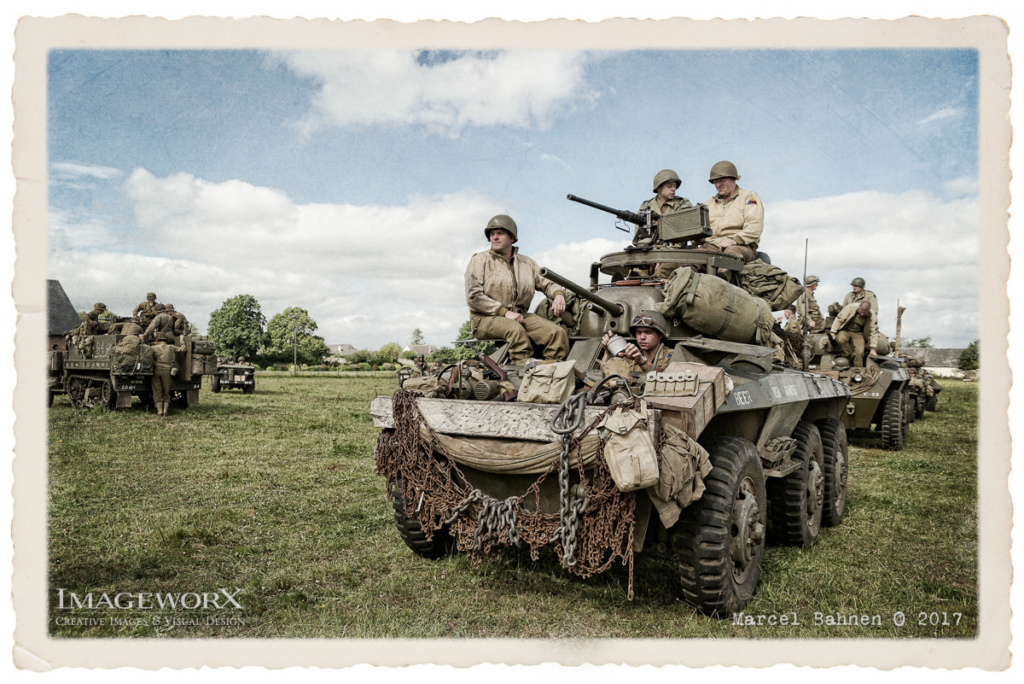

Another group, Paralightworx, a German historical film company, recreate these sorts of images also:
Using colour grading as well as practical and digital effects, these to me can effectively be used to tell a visually appealing story. Used in their short films, it is applied very well. Paralightworx also make create use of colour schemes based on location which I would like to try and replicate. Basing of the tone of the area, I will try to do the same within my photographs.

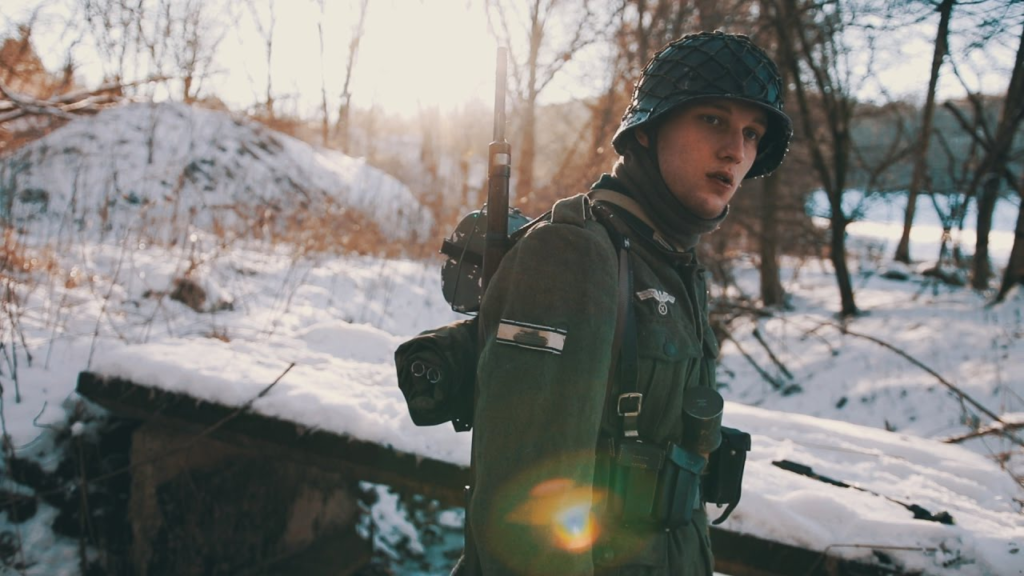
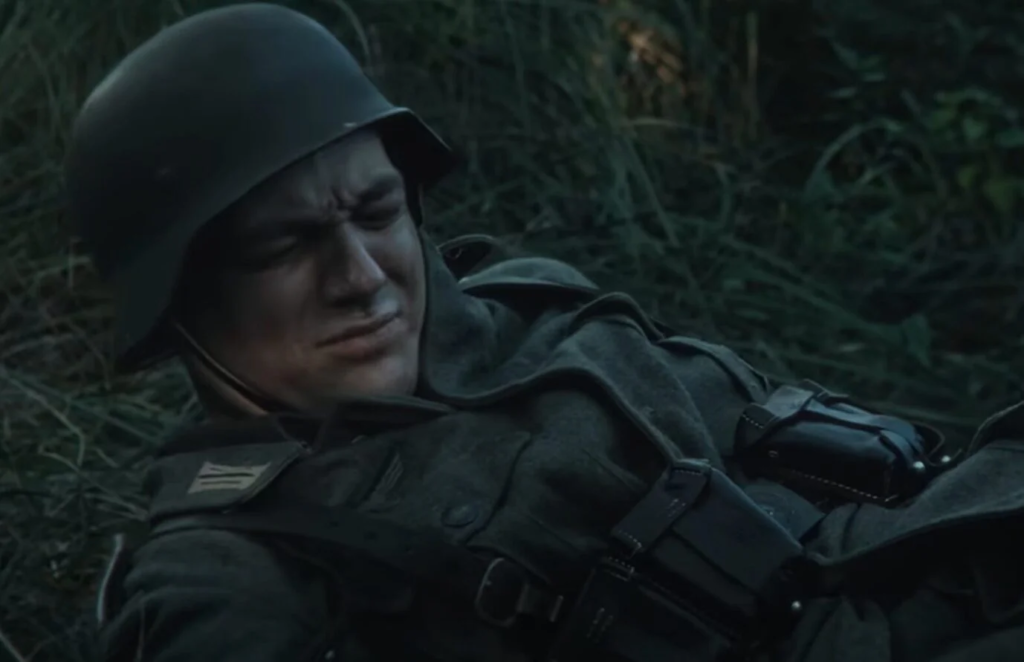

Another photographer who explores this sub-genre of historical visualisation is Michiel Peters. With numerous images covering the conflict he specialises in portraying these men and women who fought as accurate as possible, even down to locations they fought at. With his photography’s aesthetic style, I would like to recreate the gritty, low-saturated colour scheme he uses. Using his idea of photographing in the exact locations soldiers where, I will replicate that through doing the same within the bunkers of Corbiere. With many of the bunkers restored to look how they did during the Second World War, this was add to the depictive value I aim to replicate.
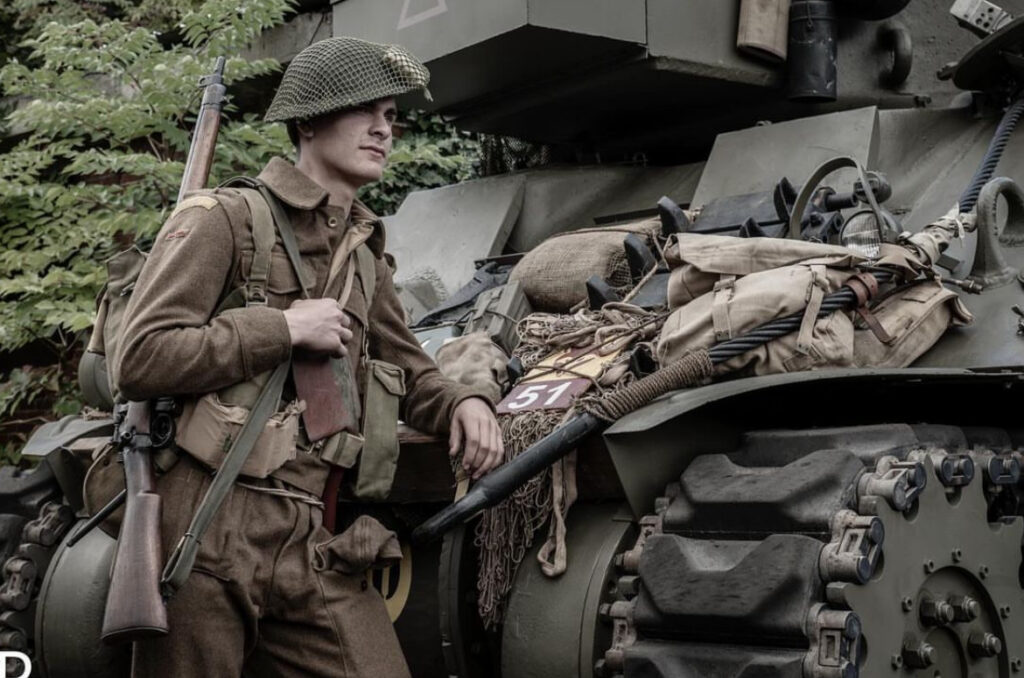
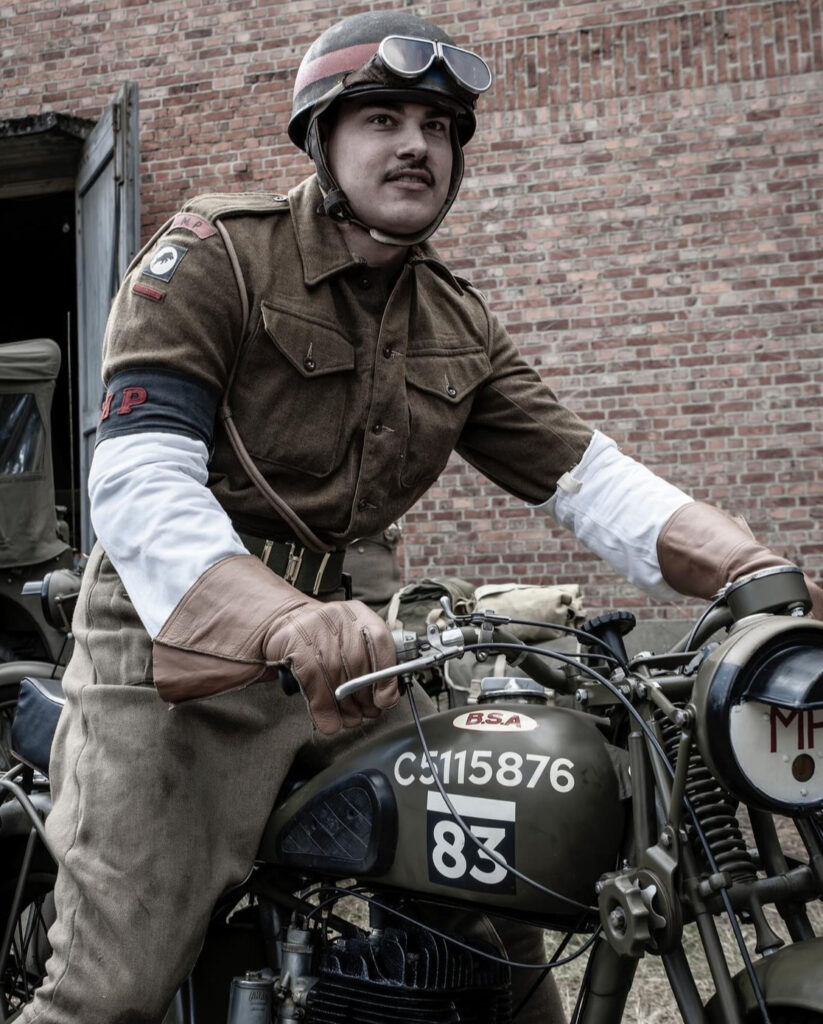
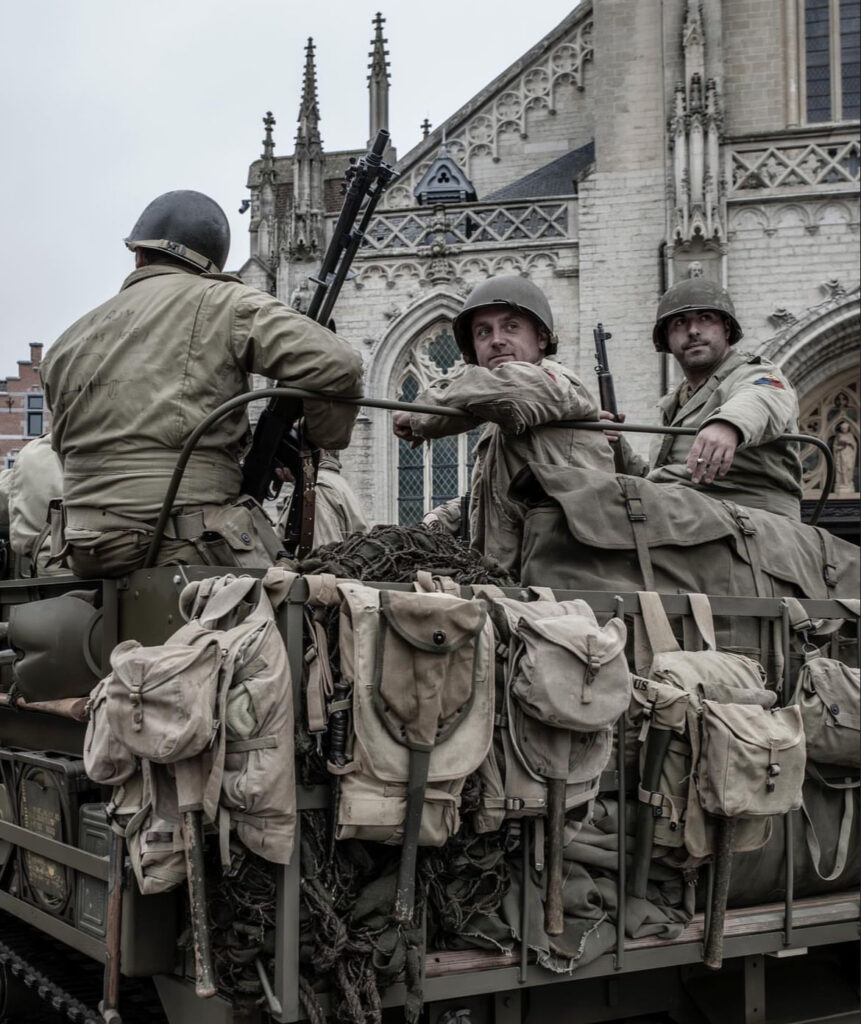
Story through photograph inspiration –
Germans of 2nd Company, MG Battalion 16 and their stories:
CIOS Review NO.35
Engelbert Hoppe –
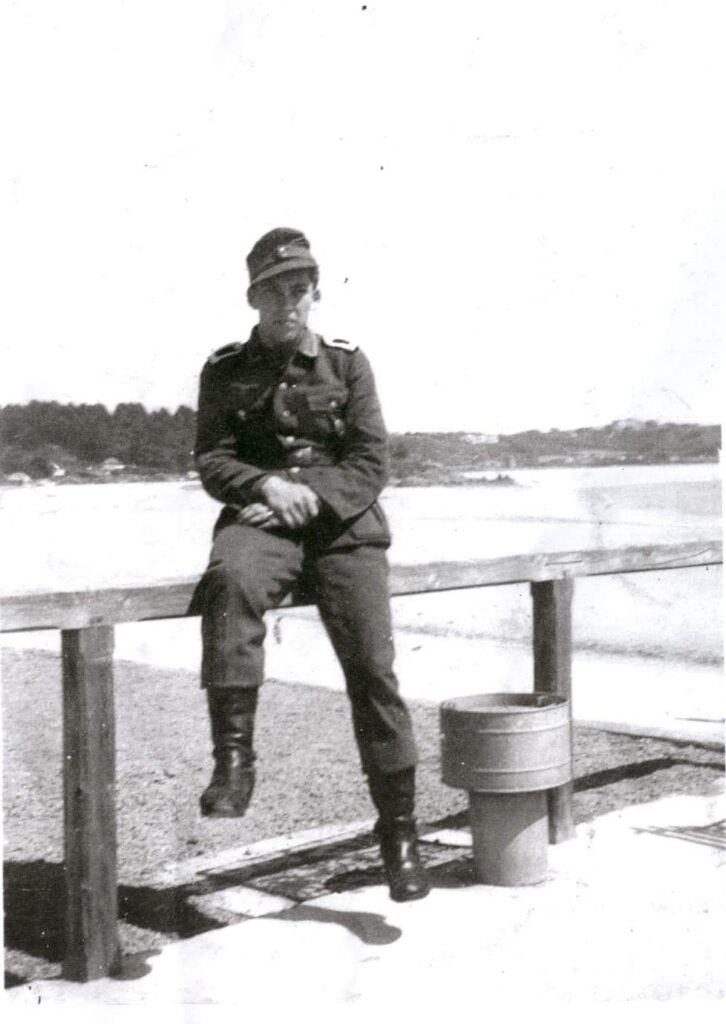
Born on the 18th August 1924, In the town of Eschweiler, six miles from Aachen. Engelbert was raised by family as a roman catholic. At age 11, Engelbert experienced the Nazi regimes take-over, and would be forced into his future career: “I wasn’t a member of the Hitler Youth and I was ‘arrested’ along with some friends for wearing the blue shirt of the catholic boy scouts whilst camping in the Eifel woods. Even here the Gestapo had traced us. We were locked up in a barn for the day and our two leaders were taken to Aachen Gestapo Headquarters for Questioning which lasted for two days. This was all terrifying”. Being well-educated, Engelbert was studying at boarding school, awaiting his call to university, this however was not case as his conscription papers arrived and he was forced to report in Aachen. Assigned to Stamm-Komp./G.E.B. 464 (Regulars company/Grenadier replacement Batallion 464), there barracks where situated in his hometown, marching past his parents house, they had not known he had been drafted.
In May of 1944, He was moved to St Malo to then be shipped to Jersey, here a stroke of luck would occur. Running into the commander of St Malo himself, Oberst Von Aulock, he was ordered to report to a Bunker in St Malo, on presenting his ticket to Jersey he was able to convince him to allow him passage to his ship. This would prove to be lucky as in the later months of that same year St Malo was laid waste to a siege by allied forces.
Serving in Jersey, apart of MG Battalion 16, 2nd Company he was put in charge of the M19 bunker complex. Reaching the Headquarters of MG battalion 16 the Feldwebel at the desk asked him from, replying Eschweiler, near Aachen, the Feldwebel in shock replied he was too, and a frequent guest to Engelbert’s parents café. To Engelbert, although being far from home, he felt somewhat closer with this first impression of the island. When reaching Corbiere he gave his first impressions “walking on, all of a sudden I was fascinated by a wonderful seascape – Corbiere lighthouse. This wonderful sight made me stop for a while and take a deep breathe, smelling and tasting the sea air, I saw the Corbiere tea room and 2 bunkers on my right spoiling the view of the lighthouse”.
living in the bunker with 6 other men he would come spend a lot of time with them, all aged around 40, they all could’ve been his father. Life on the island was static, to pass the time, Engelbert and his comrades played games, fished, sung. One of his Comrades, Gustav, singing, when asking the lyrics he told Engelbert not to bother as this was a political song in support of a left-wing political view, and ideology that he had been punished for in the past and went against the sentiments of the Nazis. When exploring the area, Engelbert became friends with some of the locals, Mr and Mrs Le Brocq, when dining in their tea room, Mrs Le Brocq said to him that she did not see him as an occupier but a new neighbour, like with the men of the bunker, he saw them as his grandparents, feeling again somewhat closer to home.
By June 6th, 1944, the allied invasion had began. with the recapturing of Europe, Jersey was cut off, food imports stopped, hunger began. With allied planes over the island, the men where put on alert 24/7. With the food ration dwindling in the colder months, the local population began to starve. Within the cold concrete bunker, small stoves kept them warm. Food was gathered by ‘the poacher’ Karl heinen, hunting rabbits with his rifle, fishing was done by a West-Prussian, named Joszef Proehma who was skilled at the craft.
Being written a letter from home. Engelbert discovered his home town had been bombed, luckily his parents and sister had survived, His brother who also was in the war had lost his Bf109 over paris and was reassigned to a parachutist unit. With Germany bombed and Jersey not he was saddened at the unfortunate circumstances. With the arrival of the SS Vega in late December, the Le Brocqs had been given red cross parcels from Canada and New Zealand. Visiting them, Engelbert was given a small bundle of items such as chocolate, biscuits and butter. Brought to tears he had no way to thank them, spending time with them they used their secret wireless to listen to the BBC, the news gave him home that the war would end in a few months. Surviving the rest of the war Engelbert became one of many POWs (prisoners of wars) or as Engelbert named it POPs (Prisoners of peace), and was taken to England to then be sent back home.
Engelbert’s Poem:
An Die Nacht –
“Ewige Ruh liegt um mich her,
veträumt hör ich die wasser rauschen.
Ich sitz am weiten weltenmeer
und will den wellen lauschen.
Klar ist die Nacht der funkelnden Sterne,
Der goldne Mond spielt mit der Flut;
Komm, greif mich einsame Ferne,
Der Menschen Welt rings um mich ruht.
Leise erzählen die Wasser von Heimat,
Führen mich zu der Eltern Haus,
Bilder der Kindheit ziehn ans Gestad,
Steigen aus dunkeln tiefen heraus…
Stille Nacht, nun bist du gegangen,
Hab Dank für deine himmlische Macht.
All mein Gedanken hielst du umfangen
Und hast mach Jersey die Heimat Gebracht.”
– Im Juni/Juli 1944.
Translated to English –
To The Night –
“Eternal silence all around me,
Like in a dream I hear the waters rush.
Sitting by the ocean.
I listen to the waves.
Clear is this night of sparking stars,
The Golden moon is playing with the rising tide;
Come get me, distant loneliness,
The world of men around me is at rest.
The water murmurs of my homeland,
Leads me to my parents’ house,
Images of childhood come to shore,
Rising from the darkest depths…
Silent night, now you have gone,
I thank you for your divine power.
You engulfed my thoughts
And brought a piece of home to Jersey.”
In June/ July 1944.
CIOS Review NO.49
Horst Hermann –
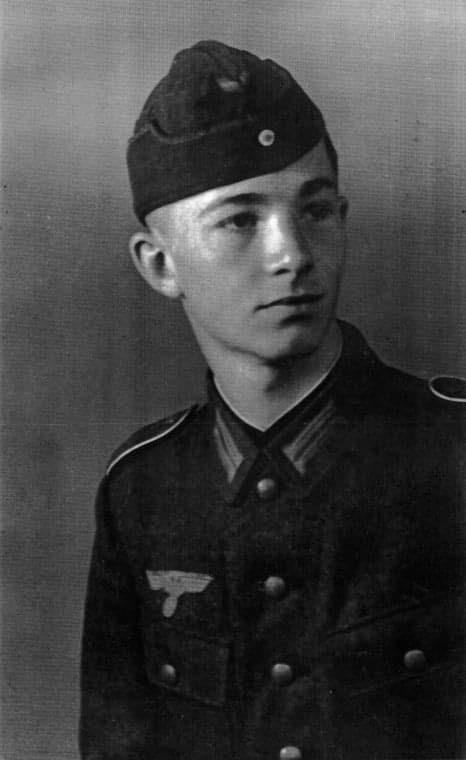
Born, 8th March, 1925 In Berlin, Horst lived through a post-war capital, infested with hyper-inflation and political instability. Serving some time working for the state labour service, he built railways. At the age of 19 he was drafted in 1943. Being issued his uniform and an old helmet from the first world war, Horst saw this as a good Insurance policy however as due to its thicker steel it offered more protection. With 9 other Berliners, Horst spent some time fighting on the Eastern front. Due to his young age, he was not fit for fighting in such an active role so what ordered by a higher up that he would be sent to “some god-forsaken island off the French coast”. Travelling across Europe in Goods’ wagons he arrived at St Malo and was shipped off to Jersey in September of 1943. Alongside his fellow Berliners, they where all posted to 2nd Company of MG Battalion 16.
Stationed within various positions he mainly resided in the K2,Jagerstand. A Bunker within strongpoint Corbiere that housed a First World War, French canon. Living amongst ‘Country Bumpkins’ as he called them, him and his friends from Berlin found it difficult to converse due to their accents, these men were seasoned members of MG Battalion 16 as they where from the place in Germany where it was established. Whilst in the K2, Horst almost face court martial twice: With the first instance, Horst was given the chance to fire the gun, how it functioned was through the pulling of a lanyard, when instructed to fire, Horsts nerves got the better of him and it slipped through his fingers. The bunker commander, Feldwebel Werner Hentrich, assumed it was a misfire, to assure the safety of the men he ordered them to evacuate the room, after confessing his mistake he was not well liked and was threatened with a potential court martial. His second run-in with potentially getting a court martial, was due to accidently setting of a line of trip-flares. Putting everyone on alert, more specifically, the naval personal in the MP2 tower nearby who lodged a complaint about the “fireworks display”. On another occasion he kept quiet, whilst aiming the gun, he flinched prematurely at the firing of the gun, instead of hitting a designated rock close to La Rocco Tower it ricocheted and hit one of the southern machicolations of the tower, as smoke rose above it, he kept this a secret until revisiting the island in the island. If the shell had been a high explosive, the damage caused to the tower would be too severe, which they where ordered not destroy due to its historical significance.
Serving as Static Infantry, Horst was also trained as a machine gunner on the MG34. Training in the dunes, his lanky figure helped reduce the weight of the 12kg machine gun. The downside however, came with cleaning it after. Due to its complex German engineering removing sand from the working parts consumed a lot of Horsts free time. 2 pets lived in the bunker, a cat and dog which they adopted as mascots, as the war progressed however food supplies dwindled and the cat was unfortunately eaten, on recalling this story Horst would always have a tear in his eye.
After the war, Horst revisited the Island many times, in the years 1980, 1985, 1991 and 2005, until in March of 2007 the news was sadly given that he had passed away, aged 82.
